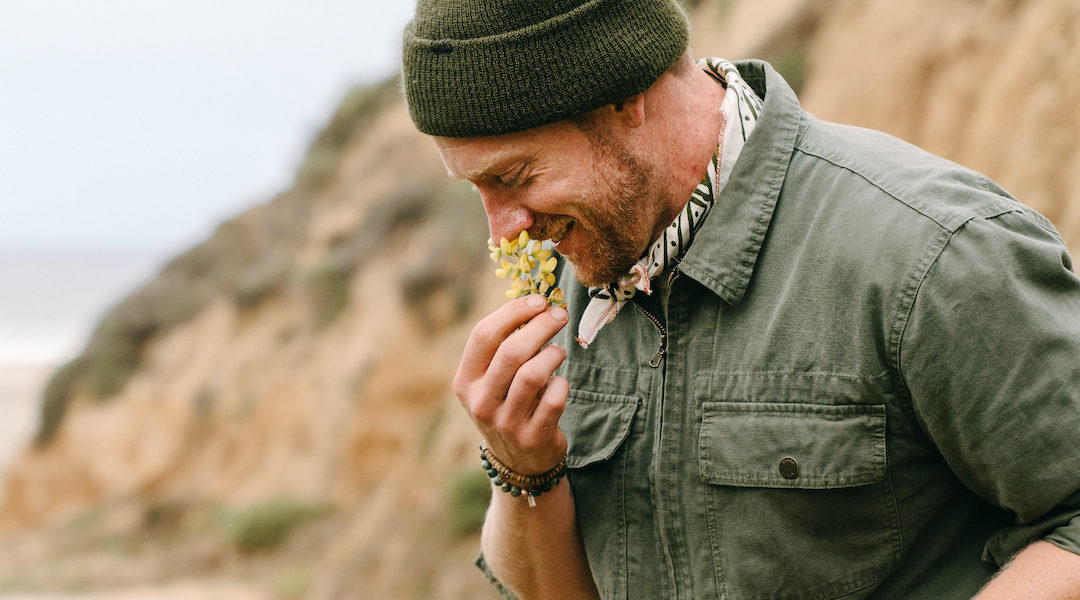
These Chefs Take Wilderness Cuisine to a Whole New Level
Hulu’s Chefs Vs. Wild contestants share tips on making the best meals in the backcountry.

Mike Battey
As an avid food fanatic, I’ve admittedly grown a bit tired of culinary competition shows, but the series Chefs Vs. Wild speaks my language. The show, which streams on Hulu, features chefs—many of whom hail from the West—paired up with survival experts. The teams are then tasked with hunting, fishing, and foraging their way to delicious meals.
I adore fishing and foraging in all its forms, and went to culinary school, so I used to think my camp meals were pretty top-notch. But these outdoorsmen and women are another level of inspiration.
In anticipation of attending survival school in the near future (more on that to come in an upcoming WildLands newsletter; sign up here!), I asked some of the contestants for their tips on how to best start foraging and cooking both safely and deliciously out in the wilderness.
When it comes to nailing down the most critical skill, every chef was in agreement.

Mike Battey
“It still all starts where it started for the evolution of mankind: the ability to harness and manipulate fire,” says Sacramento-based chef Kevin O’Connor. “Not only will your fire keep you alive and warm, but having a deeper understanding of flames and coals will make those delicious outdoor moments easier.” As many grilling enthusiasts can understand, learning to manipulate and work with hot spots is essential to being a great live-fire cook, and every contestant I spoke with agreed.
Being able to start a fire, regardless of weather conditions, is important not only for warmth, but for signaling, cooking, and morale.
The Chefs Vs. Wild constants are also firm believers that you don’t have to go into the bushland to start foraging. The best place to start is with a great mentor, according to Muckleshoot tribal member, nutritionist, and native foods specialist Valerie Segrest.
“Find an experienced mentor who knows what they are doing, what you are looking for, and how to harvest properly,” says Segrest. “Learning to identify plants is like building up muscle. There are a lot of look-alikes out there, some poisonous or toxic. Making sure you are harvesting the right thing and preparing it in the right way is vitally important.”
Her books Feeding 7 Generations: A Salish Cookbook and Indigenous Home Cooking: Menus Inspired by the Ancestors are a great place to start for folks living in the Pacific Northwest.
As far as foraging goes, many of us tend to want to go straight for the chanterelles, but Salt Lake City-based chef Viet Pham guides us away from that tendency. “Plants are the best to start foraging since there are a lot more readily available, while mushrooms are a bit more challenging.”
Greg Chaney, a lifelong survivalist who has been living off-the-grid in Alaska for over 40 years, believes that berries, when they’re in season, are the best place to start for beginners.
“With a little research, they are easy to identify,” he says. “Usually their bright colors make them stand out and they taste great. They’re instant gratification. The hardest thing is not to eat them all when you are picking them and remember to put some in your basket!”
Yep, I definitely can relate.

Mike Battey
Chef Tracy Little, who grew up in Fort McMurray, Alberta, forages daily and incorporates her wild finds into her restaurant, Sauvage. “Start small and familiar. The invasive vicia sativa, also known as common vetch, is easy to find, and tastes like peas,” she says.
She also loves cooking with dandelions. “They are absolutely everywhere, and have so many uses. Their greens are bitter, but wilted with butter, they are a whole other experience. Their flowers can be easily identified, and make a beautiful fritter or colorful salt. And their roots can be made into a coffee substitute.”
As I continue to build out my own foraging and camp cookery kit, I had to ask the chefs what their favorite tool was. Perhaps it’s no surprise that their answers involve some form of knife or pruning tool. We cooks love our shiny objects! But many of the contestants also stressed that the most important tool is really a mindset. Staying calm under stress and being present is one of the greatest gifts that spending time in nature provides.
“I think the most important skill you can have in the wilderness is adaptability,” says Little. “The weather is moody, things don’t grow in places when you need them, and animals can be unpredictable. It’s easy to get frustrated, especially when you’re cold, tired, or hungry, but being able to refocus and think about what your alternatives are, that could be what makes or breaks you.”
“It really comes down to this: Extinguish your fear!” says O’Connor. “You don’t need all the gear you think you need. You don’t need to execute recipes perfectly. You don’t need success in every hunt. The big win is the joy and perspective being in the wild brings, and a delicious meal by the fire is a plus. Get started today, and stay consistent.”
I couldn’t agree more.
We only recommend things we love. If you buy something through our site, we might earn a commission.
Read the Current Issue Here!
Get one year of Sunset—and all kinds of bonuses—for just $29.95. Subscribe now!
